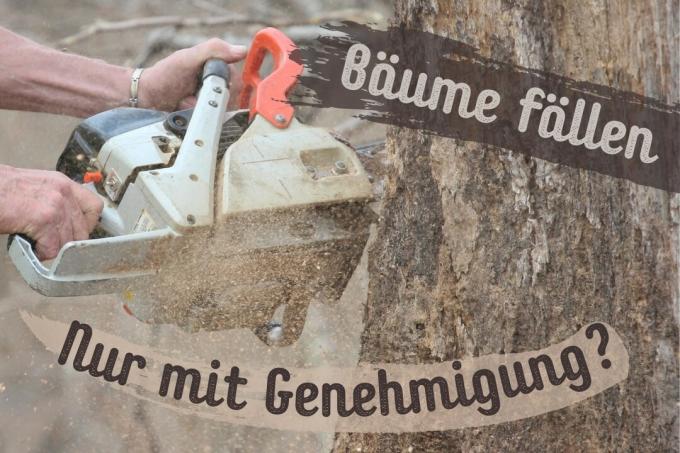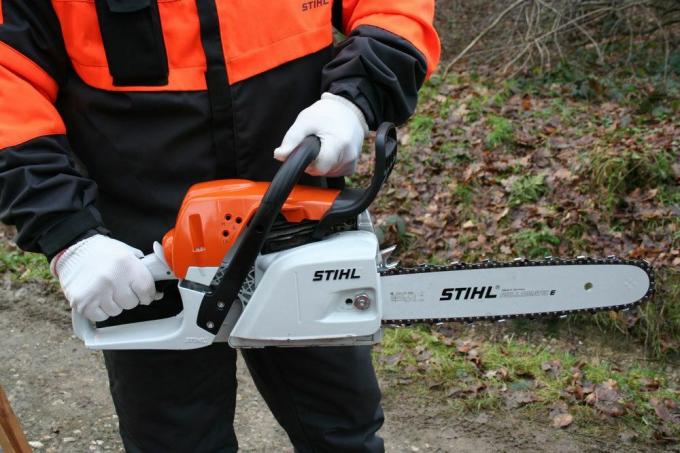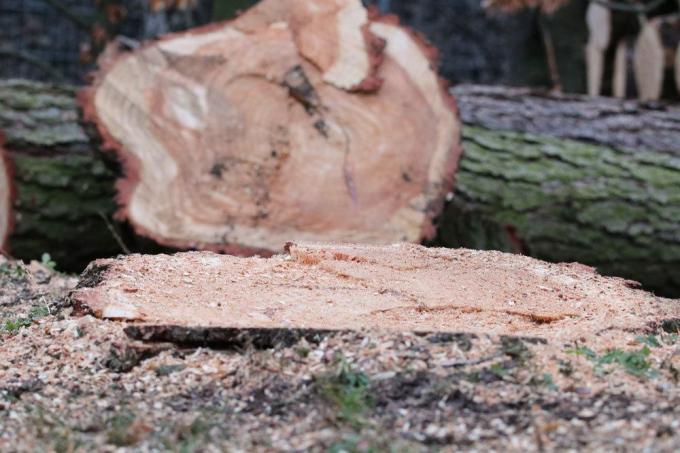
table of contents
- Private property: tree felling allowed?
- Overview of the fall times
- Note tree species
- frequently asked Questions
Cut down trees is a complex matter. If they are not felled according to regulations, heavy fines can ensue. You can find out here whether you need a permit to cut trees on your property.
In a nutshell
- Felling trees on private property is possible
- only outside the closed season without approval
- Approval required depending on the tree protection statutes
- depending on tree and trunk thickness
Private property: tree felling allowed?
If you want to cut down a tree on your private property, there is nothing wrong with it at first glance. According to the Federal Nature Conservation Act (BNatSchG), you are allowed to fell trees as long as they are completely on your property. However, there are certain points you need to keep in mind so that you do not act illegally:
- Fall times
- Trunk circumference
While the tree felling period is specified by the BNatSchG, the tree protection statutes of your community determine from which trunk size a permit is required. If you do not observe these points, you are not allowed to fell trees, even if they are on your property. Trees that fall under the following criteria are an exception:

- Risk of tree breakage
- Endangering structures and people
- Traffic safety
- infectious diseases (e.g. B. Fungal attack)
- Pest infestation
- Dead tree
- Use of the property is no longer ideal
- necessary construction work (e.g. B. Monument protection) not possible
You can cut these trees outside of the specified time and regardless of the size with permission, if you can produce evidence. In most cases, an expert will come to you after the application has been submitted to take a closer look at the tree.
Overview of the fall times
The nationwide felling times are important so that your application for felling is even possible. On private property, you are only allowed to fell trees for a period of time that gardeners are likely to be aware of. This is namely identical to the legal pruning. From 1. March to 30th After the 2nd of September you can Sentence in the 5th Section 39 (general protection of wild animals and plants) in the BNatSchG do not cut trees. The reason for this is the protection of wild animals, which use the plants for the following purposes:
- Reproduction
- Resting places
Outside of this protection period, you can fell trees on your private property without any problems, provided you have obtained permission in advance if this is necessary. You can either submit an application during the fall or send it in beforehand and wait until autumn or winter to execute it.
Note: If wild animals use trees on your private property during the felling period, you are not allowed to fell them.

Note tree species
As already explained, it is definitely necessary to obtain a permit for felling for trees with a certain trunk size. These are listed by cities and municipalities in the corresponding tree protection statutes. So you have to check beforehand whether a permit is required for the trunk thickness. The specified trunk thickness is dependent on categories under which the corresponding tree species fall. Despite the regionally different regulations, there are guidelines that apply to most of the country:
- Deciduous trees: 60 or 80 cm
- Conifers: 100 cm
- Fruit trees: 150 cm
The above values apply above all to single-stemmed trees on private property. If you want to fell multi-stemmed specimens, you must measure the thickness of each individual stem. If only one is larger than the specified value, for example 50 centimeters, you must obtain permission. You should also note that some types may be exempt from the regulations. This is decided by each community and should be checked by you beforehand. Some trees are considered particularly protected in the respective communities, so you can only cut them down in an emergency.
Tip: Note that walnut trees (Juglans regia) and sweet chestnuts (Castanea sativa) fall under the regulations for deciduous trees, although they are often cultivated as fruit trees.
frequently asked Questions
If you fell trees without a permit, you will face high fines. Depending on the state, these can amount to between 50 and 100,000 euros, depending on the regulations of the state and the felled tree. For example, if it is an old deciduous tree with a large trunk, you will usually have to pay more than for a fruit tree.
If the application for the felling permit is filled out, you absolutely need the trunk size. So that there are no problems after submitting the application, you have to measure at the right place. This is the only way to be on the safe side that the measurement result is not wrong. You measure the trunk thickness from the base of the trunk one meter above the ground. If the trunk is shorter, measure directly below the crown.
When cutting trees, you need to be careful about the safety of residents, neighbors, buildings, and other structures. As a layperson, small trees can be felled yourself, but you should hire a specialist company for large specimens with thick trunks. They have to be removed piece by piece so that they do not become a source of danger.
If there is a tree on the property line, you must consult with your neighbors or the owners' meeting and obtain permission before felling. This applies even if you have a special right of use for the position in question. If the tree is felled without consultation, it is considered illegal.
Depending on the municipality, you may have to carry out a replacement planting after a tree has been felled on your property. This involves planting a new tree to compensate for losses. If this is not possible, many municipalities offer replacement areas or a compensation payment. How big the tree to be planted should be depends on the applicable tree protection statutes.
